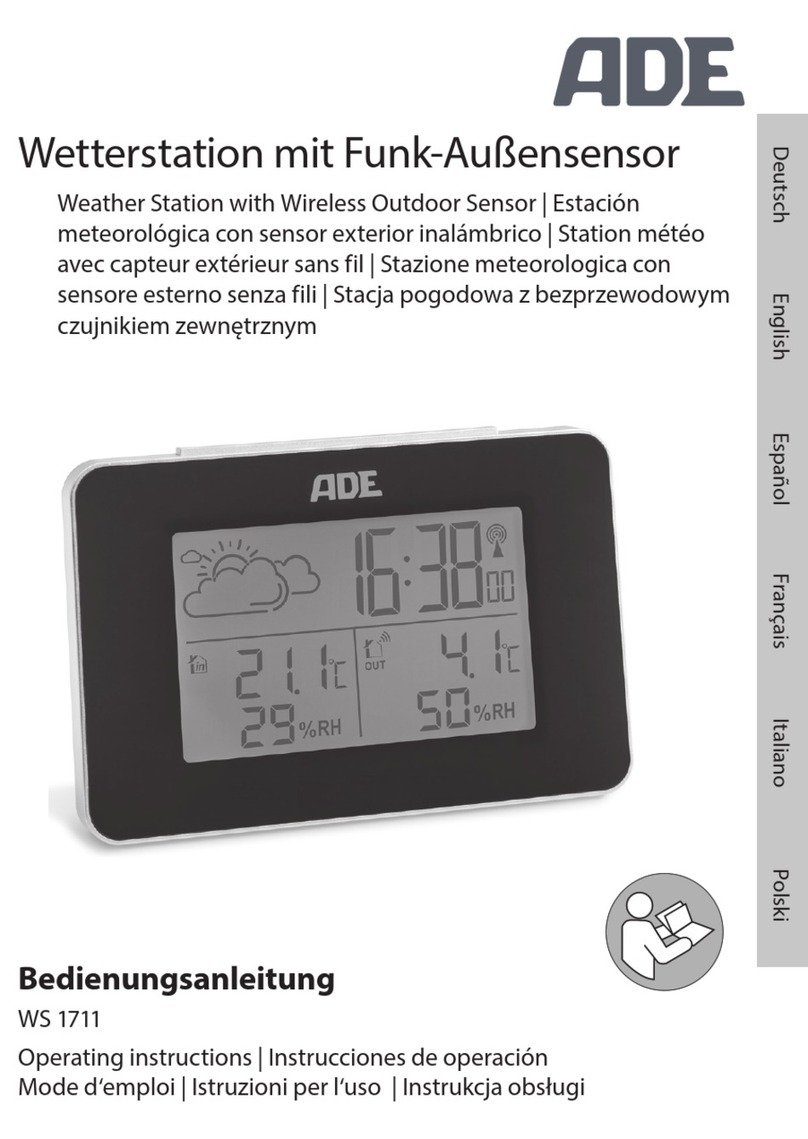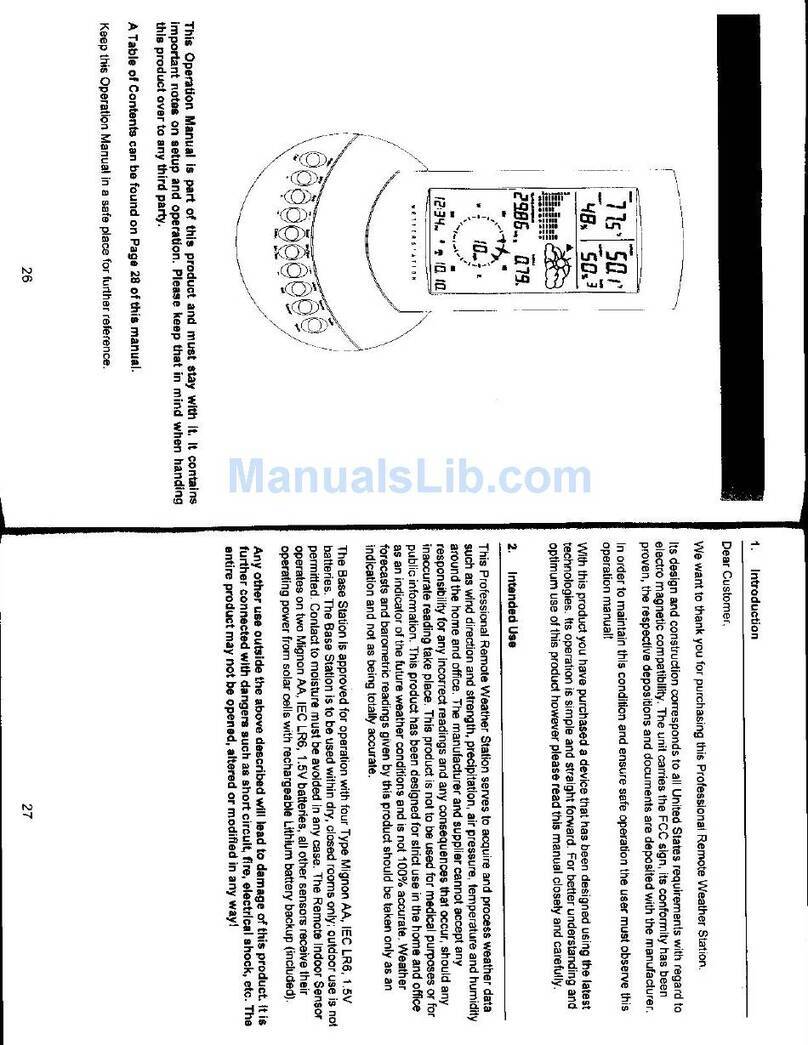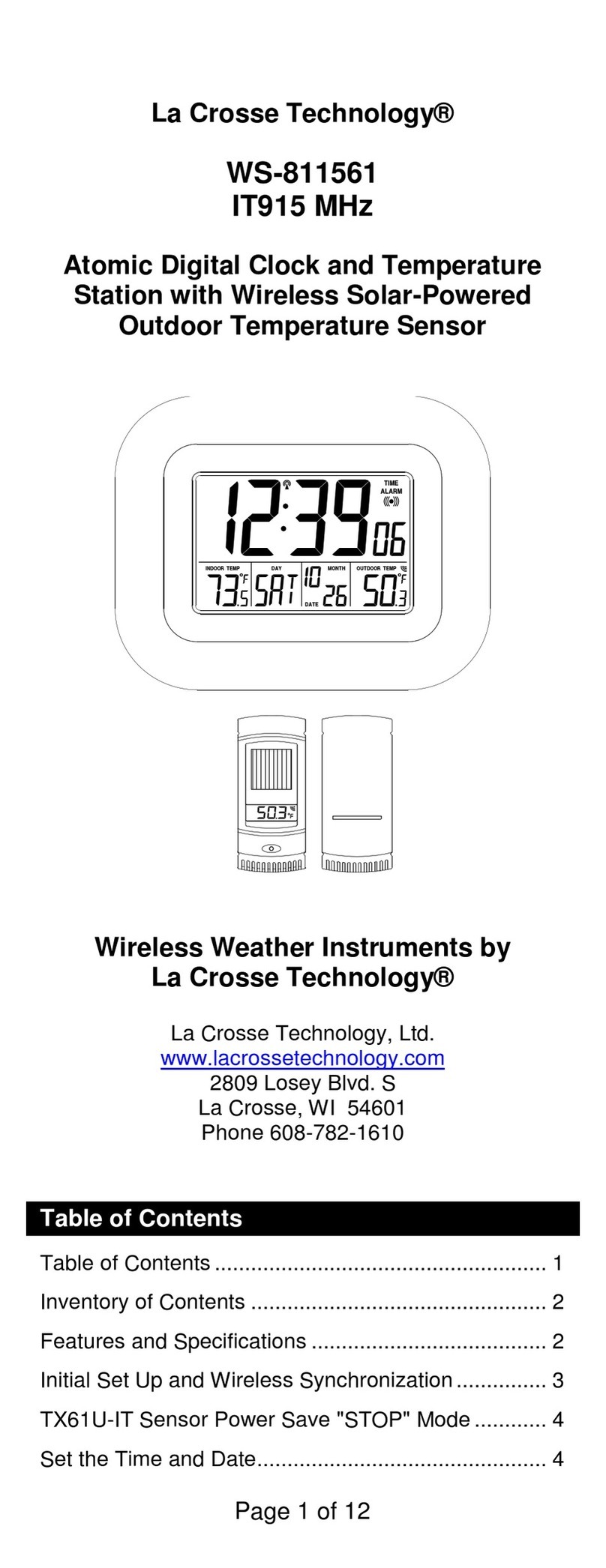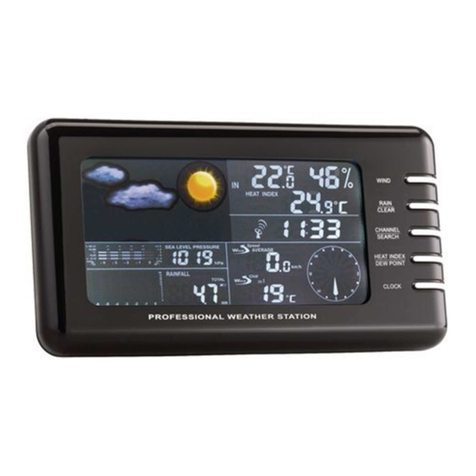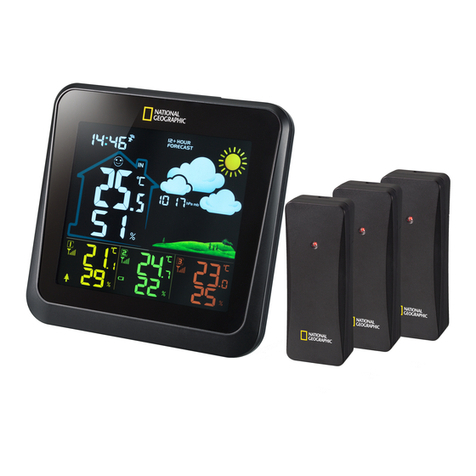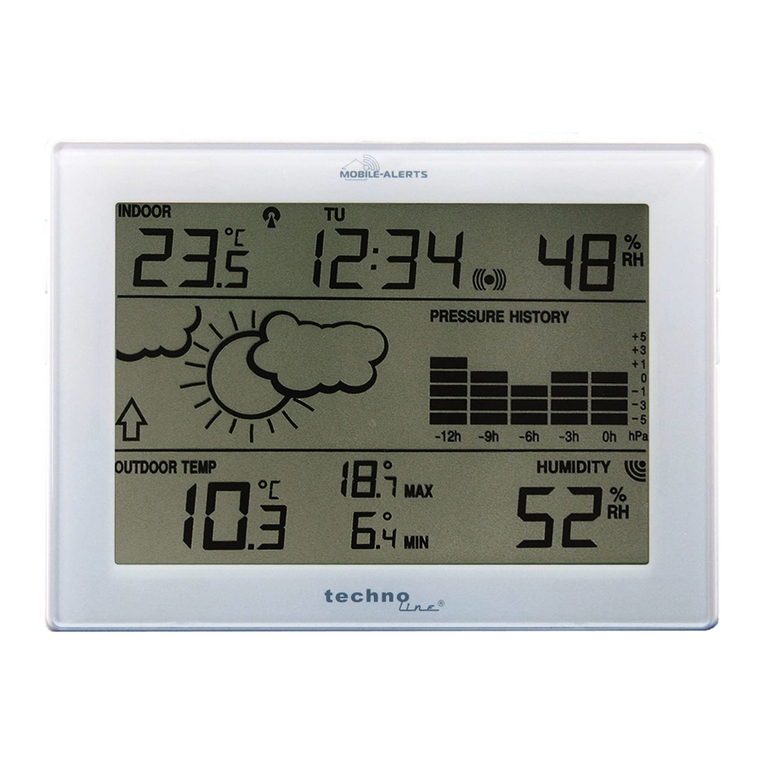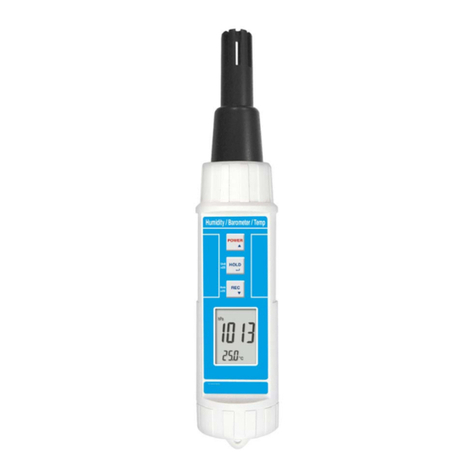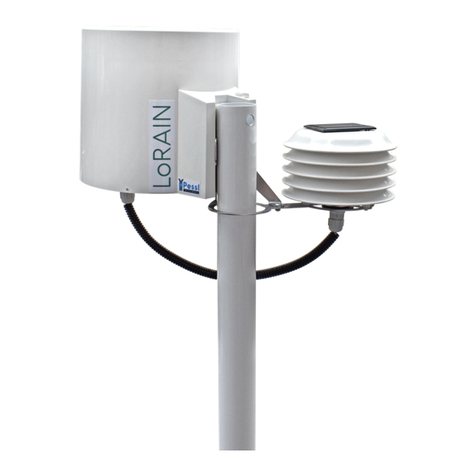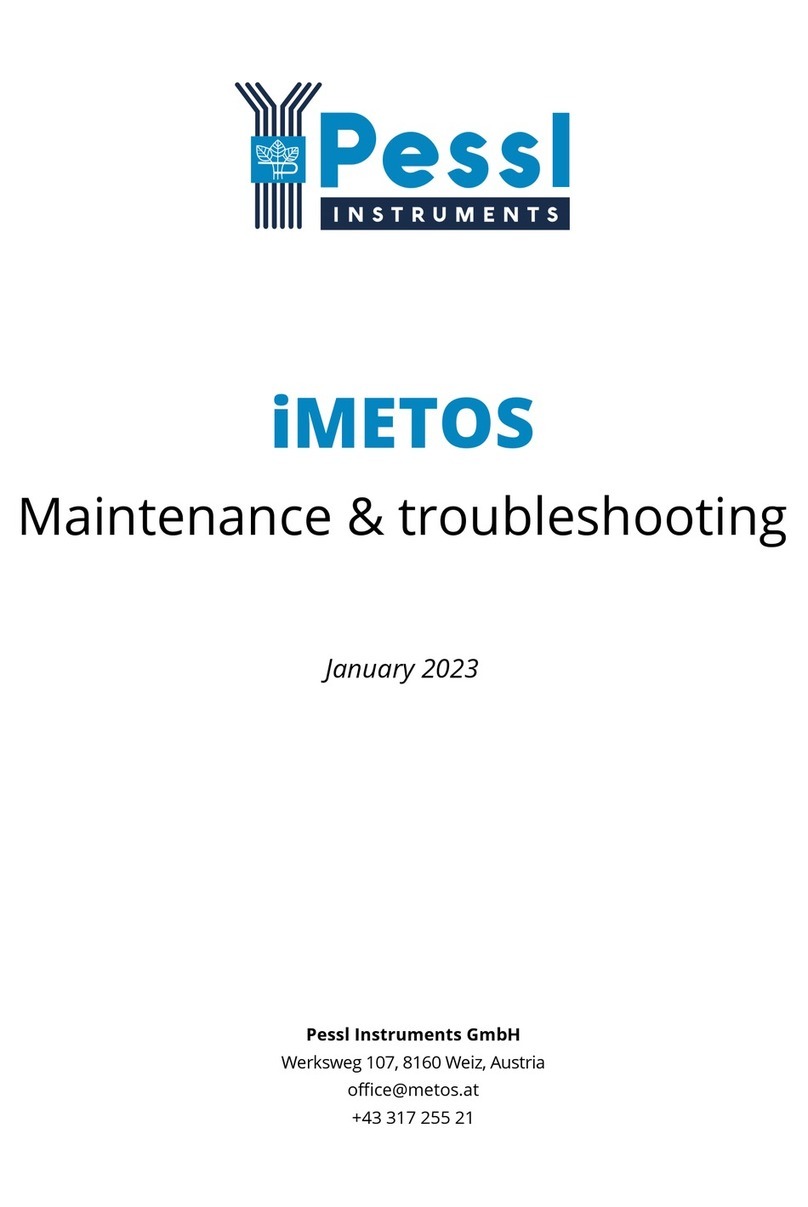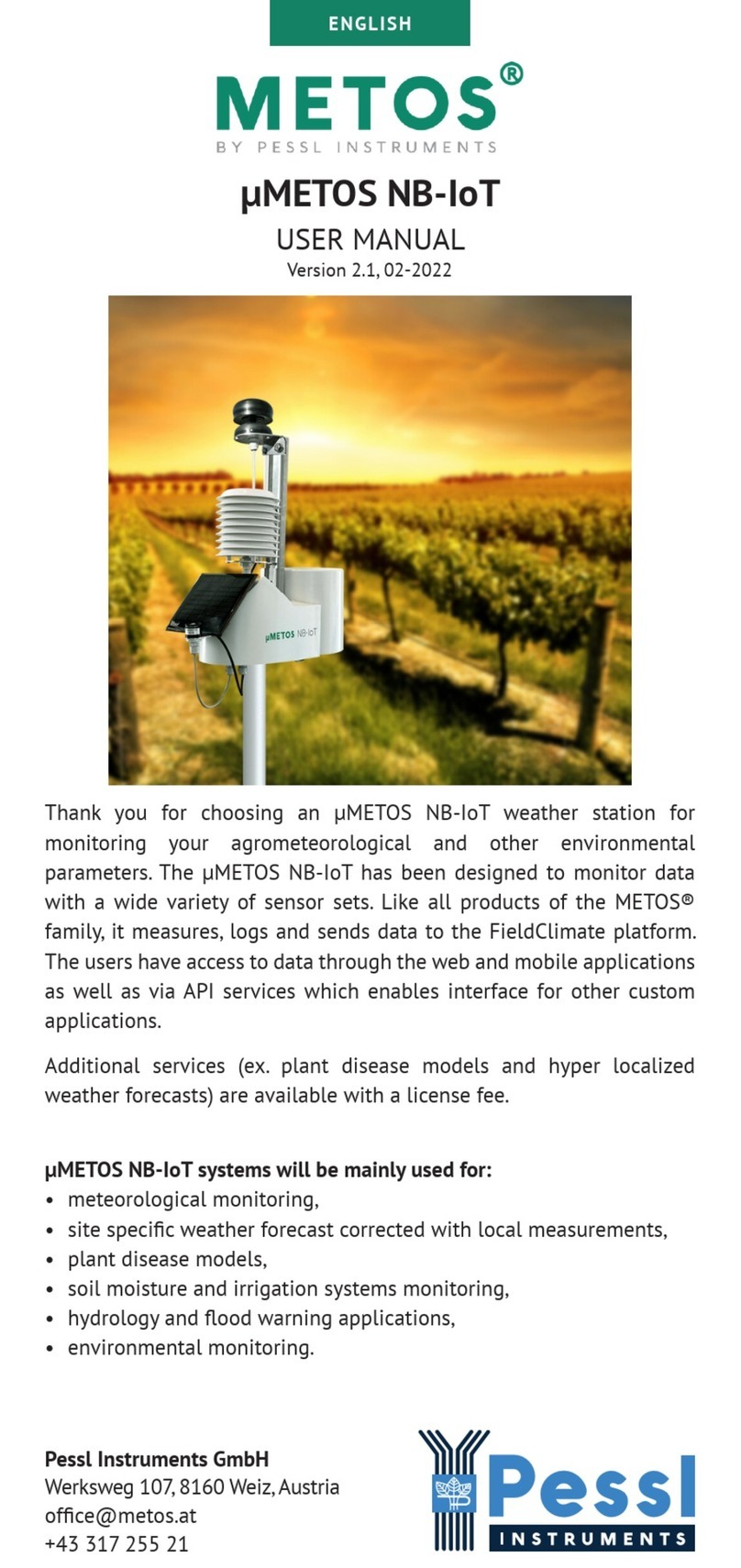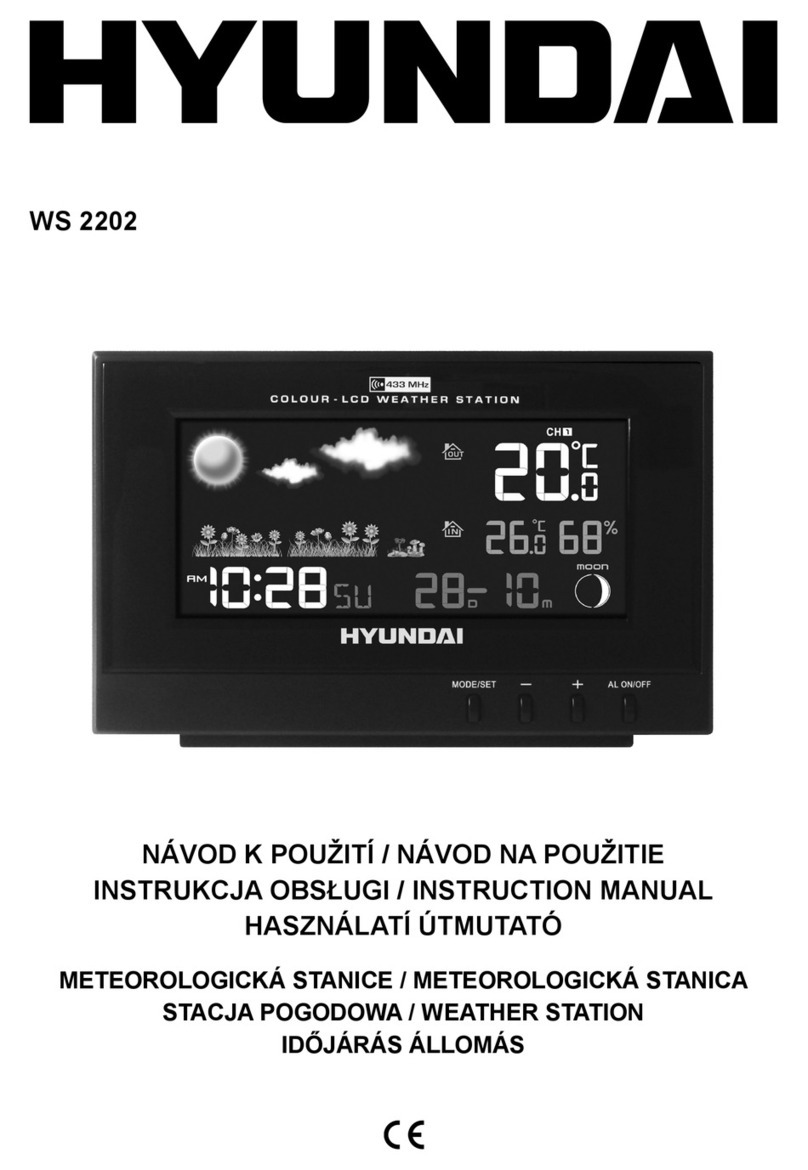
2. Insert the thinner pole into the grounded one and x it with the locking
ring at the desired height with the use of a 13 mm wrench.
3. Install the iMETOS station at 1.5 meter above the ground or depending
on the crop height. Fix the iMETOS with the two clamps on the verti-
cal pole using two 13mm-wrenches. Check the bubble level on the rain
gauge to ensure the iMETOS is installed verticality of the pole and align
the solar panel to face south (north in southern hemisphere).
SENSORS INSTALLATION:
• Temperature and relative humidity sensor should be mounted be-
tween 1.25 m and 2 m above the ground, depending on the crop. Leaf
wetness sensor can be tied to a branch of the plant or to the station
holder (next to the rain gauge), slightly inclined, with the lter paper
looking up. Mount it in a position that allows the sensor to pick up
early rain and to stay wet in the shade.
• Soil temperature sensor should be buried in the ground. The depth
will depend on the application. To monitor root growth and nitrogen
mineralization in vines or apples in early spring, it is best to install it
at 10 to 20 cm depth. If you want to assess the emergence of seeds,
install it at the sowing depth.
• If you ordered a wind speed sensor, install it on the top of the pole.
You will nd the three-cup wheel and the allen key to x it to the axis
of the sensor; if you also ordered the wind direction sensor, you will
nd a ”T” shaped holder with two clamps provided. The wind direc-
tion sensor should point to north and the wind speed sensor should
point towards south. Both sensors are sensitive to obstructions and
turbulence.
Note: 12 sensors can be connected directly to the iMETOS board; an
extended set of sensors (up to 600) can be connected via RadioNodes
or cable chain nodes. There is a connector on the top of the mother-
board for the radio access point. An alternative use of this connector is
to read up to two soil moisture prole probes or the snow depth sensor.
For detailed info about the installation of sensors refer to
metos.at/ime-
tos-3-3-manual
or the extended manual.
START-UP THE iMETOS 3.3
On GPRS, UTMS, LTE (i.e. G2, G3, G4) networks a SIM card from a provid-
er is required. In CDMA network, you do not need a SIM card.
To insert the SIM card:
N
S
3. Lock the holder
by sliding the met-
al lock.
1. Slide the metal
part of the SIM card
holder to unlock it.
2. Place the SIM card into the hold-
er so the gold contacts on the SIM
face down on the board.
Your device is now up and running.The three LEDs on the motherboard
will turn on for an instant indication that the station has reset. After
this, the connection with FieldClimate will start and the LEDs will give
you information about the communication process (for more details see
Blinking code and SIM card sections on metos.at/imetos-3-3-manual). In
iMETOS 3.3 is a durable and exible data logger for all weather con-
ditions, but if you remove it during the winter months and store in a
warehouse, please disconnect the battery to avoid discharge.
USE YOUR iMETOS
To see the data from your iMETOS station, you need to register on the
FieldClimate Dashboard. This provides you with access to your station
data in graph or table form. FieldClimate also provides a powerful deci-
sion support system for growing your crops (plant protection, irrigation,
sowing, harvesting, fertilizing).
REGISTER AS A NEW USER ON ng.FieldClimate.com
4. Plug the battery cable (yellow
circle) into the BAT connector on
the PCB (red circle).
Note: Check that the PIN request for the SIM is disabled and that you
have data transfer service enabled.
1. Go to ng.eldclimate.com/
login and click the button
“+”.
2. Insert your personal
data & e-mail.
3. Check your e-mail and
click on the link to activate
the user account you created.
